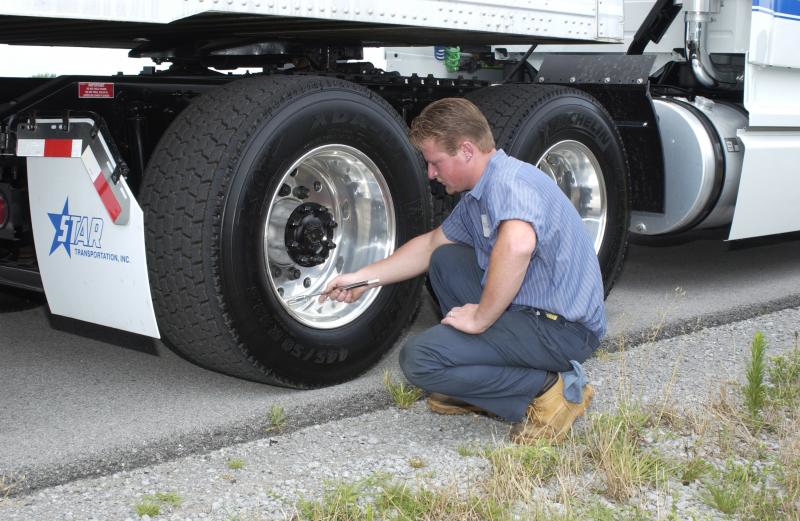Jodi Mohrmann, Managing Editor of special projects
Consumer Reports
Published:
Updated:
Tags: Money, Consumer Reports, Consumer, Morning Show
4 minutes ago
1 hour ago
3 hours ago
10 hours ago
Jodi Mohrmann, Managing Editor of special projects
Consumer Reports
Tags: Money, Consumer Reports, Consumer, Morning Show
More than 3 million drivers in the US experience damage to their vehicles from potholes. Knowing how to properly drive over them can easily mitigate that.Potholes can be jarring for any driver, but they can also do serious damage to your car and your wallet. And, Consumer Reports says those pothole repairs are costing more than ever before.
More than 3 million drivers experience pothole-related damage to their cars each year -- everything from tires and rims to shocks and struts -- costing more than $3 billion.
“Sometimes you can’t avoid a pothole until it’s too late,” warned Consumer Reports Tire Expert Ryan Pszczolkowski.
So, when you have to drive through a pothole, Pszczolkowski offers this advice:
Slow down as much as possible without catching the driver behind you off guard.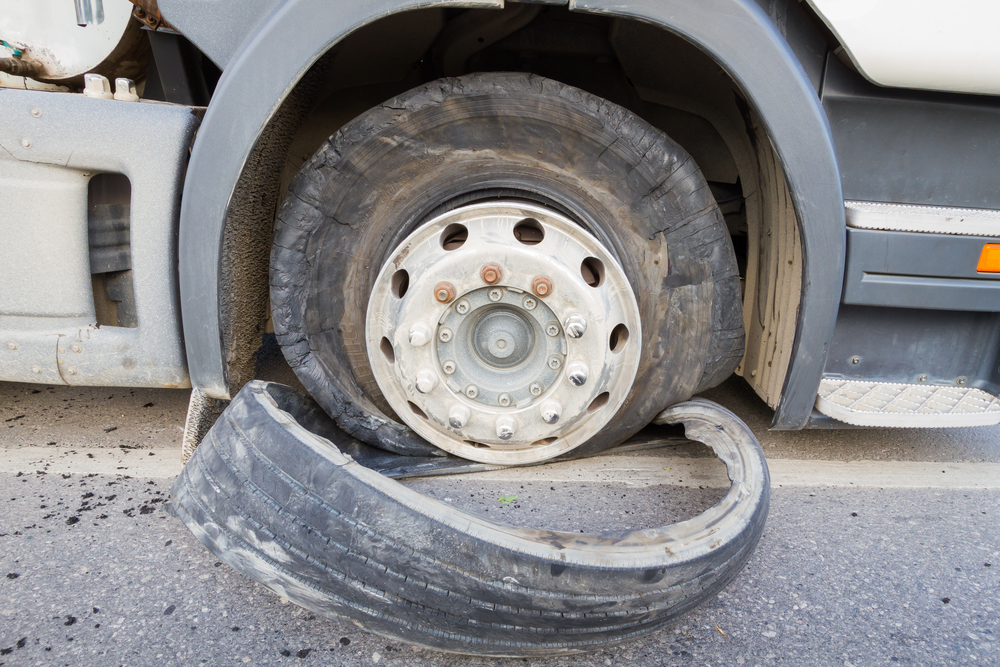
Hold the wheel firmly.
Drive through the pothole.
If something feels amiss, safely pull over and inspect the tires.
Pszczolkowski says if you find any cuts, blisters and bubbles during your tire inspection, it’s important to replace the damaged tire right away because driving on it could lead to a potentially dangerous situation like a blowout.
MORE: Consumer Reports’ Pothole Survival Guide
Consumer Reports says a new trend in tires could be leading to more pothole damage, meaning more repairs for car owners.
“While low profile tires can give you some performance gain in steering fields and cornering grip, they are more prone to pothole damage,” said Pszczolkowski.
In Consumer Reports testing, the 16-inch tire’s taller sidewall offered a greater margin of clearance between the road and wheel, and less severe sidewall flex than the lower profile 18-inch tire.
If the potholes in your life are unavoidable, when it’s time to buy a new car or SUV, Consumer Reports recommends you consider a package that comes with taller sidewall tires. Also, ask your retailer about a tire road hazard warranty, which some may add for free.
Consumer Reports says without buying new tires, you can still help prevent pothole damage by keeping your tires properly inflated and making sure you have adequate tread depth. If you are unsure about the tread on your tires, you can check with a penny by following these steps:
With Abraham Lincoln’s head going in first, place the penny between the tread grooves.
If you see the top of Lincoln’s head, your tread is shallow.
Check several grooves the same way.
If you keep seeing the top of Lincoln’s head, your tire likely needs replacement.
Watch Consumer Reports’ video on how both a quarter and a penny can help you check your tire tread:
All Consumer Reports material Copyright 2021 Consumer Reports, Inc. ALL RIGHTS RESERVED. Consumer Reports is a not-for-profit organization which accepts no advertising. It has no commercial relationship with any advertiser or sponsor on this site. For more information visit consumer.org.
By
Erik Shilling
We may earn a commission from links on this page.
Screenshot: Engineering Explained
The Volkswagen Up GTI I had in France last summer was a dream.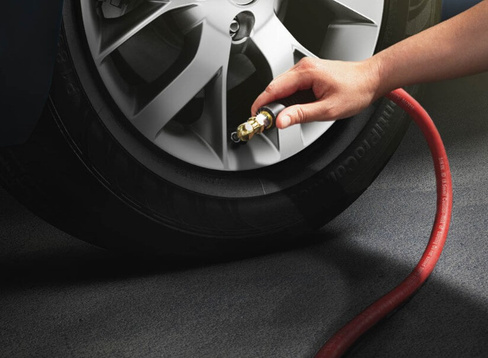 It also had 17-inch wheels and low-profile tires. Off the coast, I ran over what seemed to be an innocuous small rock in the road. I knew something was wrong in about the next 10 seconds.
It also had 17-inch wheels and low-profile tires. Off the coast, I ran over what seemed to be an innocuous small rock in the road. I knew something was wrong in about the next 10 seconds.
Low-profile tires are all the rage these days, and mostly for aesthetics, as automakers want to project “performance” or whatever. But most people, even the ones who think they are into super hyper ultra performance, don’t need these garbage pieces of rubber.
Sure, they might offer some advantages at the track, but most people don’t spend every day at the track. Most people drive their cars on roads, which develop potholes, which are deadly to low-profile tires. Do you enjoy the stress of driving a car with low-profile tires that could be felled any second by some innocuous-seeming obstruction? Then by all means, feel free to sink your money into low-profile tires.
For the rest of us, I propose a ban. Tires with bigger sidewalls can take more abuse, and they also look better. And when you run over a pothole you don’t end up with a massive repair bill, as our friend Jason Fenske of Engineering Explained recently did in his Tesla Model 3 Performance:
Not much about this vid is surprising—$2,600 to replace two tires and two wheels on a luxury vehicle is about right—but Fenske is totally correct about the uselessness of the Model 3's tires.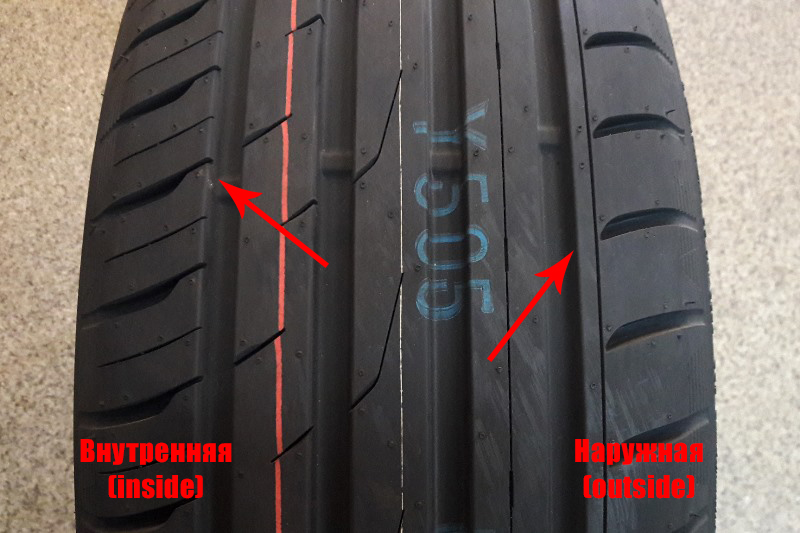 The pothole that took out his two passenger-side tires did not take out anyone else’s in the one hour and 40 minutes he was stranded on the side of the road.
The pothole that took out his two passenger-side tires did not take out anyone else’s in the one hour and 40 minutes he was stranded on the side of the road.
That’s because those folks either managed to avoid the pothole or had tires with proper sidewalls. Or they just got lucky. At any rate, driving a car with low-profile tires is an invitation to disaster, especially on a car like the Model 3, which, as Fenske points out, weighs over 4,000 pounds, putting even more stress on its 20-inch Michelin Pilot Sport 4S tires. (The tire in question is a rather low 35-profile tire, 235/35/20 to be exact. It is yet-lower profile than the 195/40/17 that blew on the VW I was charge with.)
This is not a Tesla problem, or a Volkswagen problem, or anyone’s specific problem, it is a problem with any car with low-profile tires, especially as luxury cars these days try so eagerly to show off their performance bona fides, and get heavier and heavier. I’ll also note that my Honda Fit has tires with big sidewalls.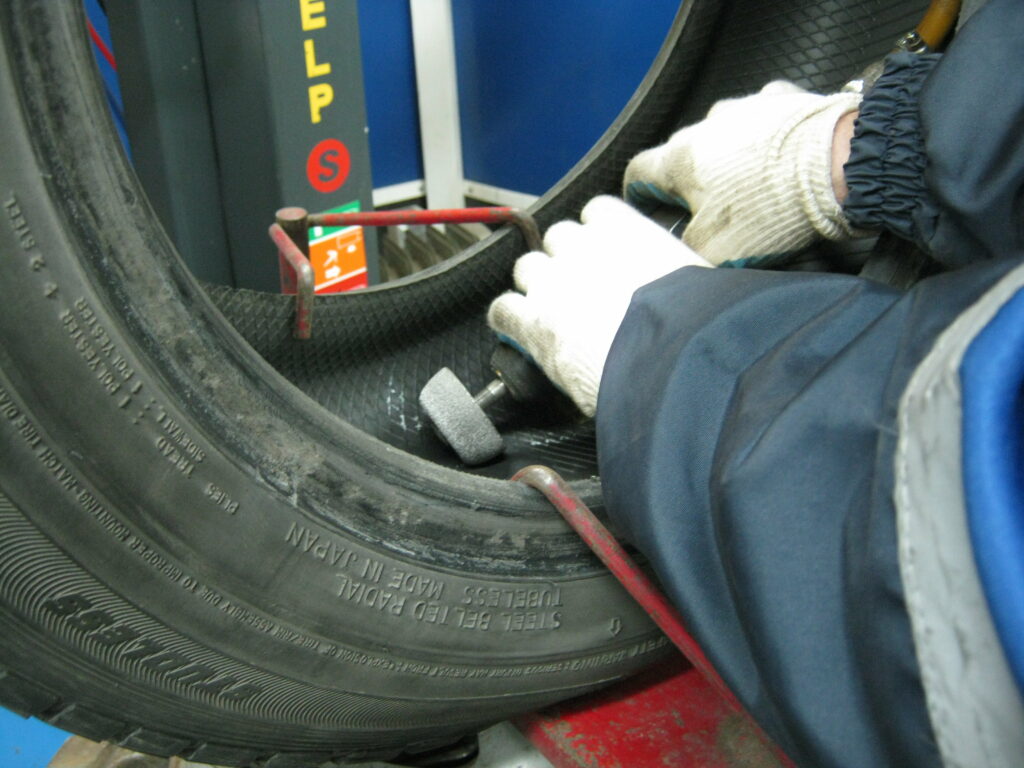 I’ve never punctured them, even hounding the rough roads of NYC.
I’ve never punctured them, even hounding the rough roads of NYC.
When that Up GTI with the low pros blew the front passenger side tire I stopped by the side of the road and looked in vain for a spare in the back. Instead, all I could find was some fix-a-flat goo that had the effect of not working at all. I had had the car for a total of about a week.
Photo: Erik Shilling
Remove these things from our lives post-haste.
In Europe, low-profile tires appeared in 1937. It happened at Michelin enterprises. But the roads at that time did not allow it to be widely used, so they put such tires exclusively on racing cars. On ordinary cars, low-profile wheels did not appear until 1978.
Low profile tires are characterized by a width to cross section ratio that is no higher than 0.8. For example, these tires include:
205/55R16;
225/45 R17;
225/40 R18 and others
The bus profile is displayed as the second digit. So, for a 225/40 R18 tire, this figure is 40.
So, for a 225/40 R18 tire, this figure is 40.
Tires are divided by purpose. The necessary information is displayed on the side. For example, there are inscriptions "standard", "perfomance" and "high perfomance". They indicate the direct purpose of the tire:
Recently it has become fashionable to buy low-profile tires with discs, especially before the onset of summer. Like any other tires, these also have positive and negative sides.
Tires with a low profile, e.g. 15 inches, are attractive with the following features:
better grip on the road;
short braking distance;
smooth entry into turns;
good maneuverability;
fuel economy;
reliable braking;
low resistance to movement;
the car picks up speed more easily;
the weight of the vehicle is reduced in combination with lighter wheels.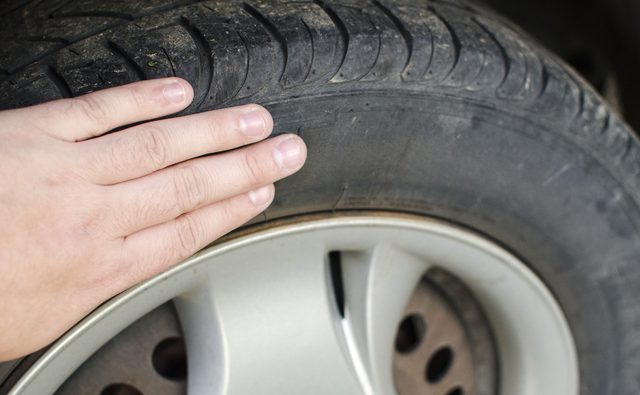
INTERESTING! Typically, low tires have a soft rubber base and a special, directional tread pattern that shortens the braking distance. They also feature a durable side part.
In order to have a clear idea of the quality, it is necessary to study the shortcomings of the products. These include:
high sensitivity of the tire to road irregularities, which reduces the level of passenger comfort in the car;
short service life;
noise level. Such models have an increased contact patch, which significantly enhances extraneous sounds. This is facilitated by the directional tread pattern;
excessive pressure on the suspension of the car;
narrow scope;
great weight. If the car does not have power steering, then the car will lose its ability to smoothly fit into turns;
in the rain, it is better not to drive on such rubber, since grip with the road surface is noticeably reduced, and the braking distance increases.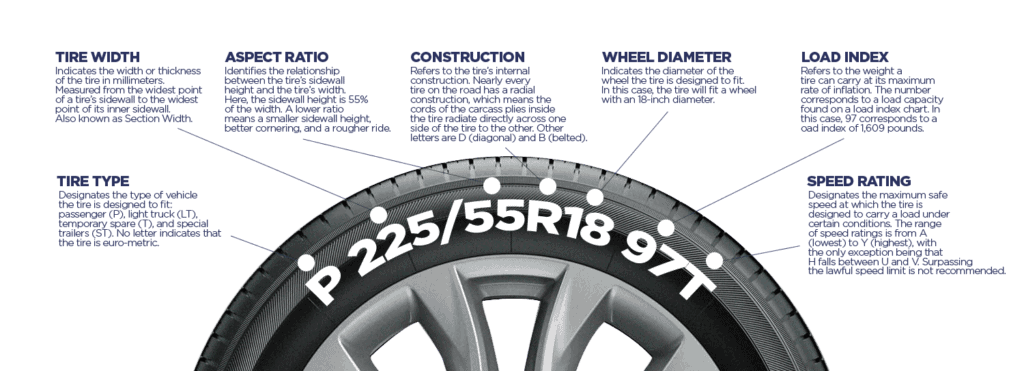
Driving in the rain is dangerous
If these shortcomings do not bother you, then feel free to purchase low-profile tires on disks for your “swallow” and enjoy the benefits that these products provide.
IMPORTANT! Before purchasing, you should weigh the positive and negative points of low-profile tires, decide on your driving style and assess the quality of the roads. Only after that it is worth buying such tires, and shiny wheels for them.
Directional pattern
Incorrect use of summer or winter low profile tires R17 is associated with the following difficulties:
traveling over bumps and bumps leads to a decrease in tire pressure, which causes deconstruction of the wheel and damage to the disk. This provokes emergencies;
if it becomes necessary to replace the wheel, you will have to act independently;
Russian roads are not designed for driving on low tires at high speeds. A motorist who takes the risk of such a journey will face dire consequences.
A motorist who takes the risk of such a journey will face dire consequences.
ATTENTION! The choice is made by each car owner independently, guided by their own arguments “for” and “against”.
High-quality car tires on shiny rims give a special style to the car. In addition, you can achieve greater maneuverability in the city, a faster set of high speeds on the highway and shorter braking distances. Low-profile tires R14 help to achieve this.
Tire R14
R14 marking means that:
If the diameter is different, then you will have to look for tires of other sizes.
R14 low profile rubber stabilizes driving. This is especially important for those who like to drive at high speed on the autobahn and other good tracks. This is where the advantages of low-profile tires come into play. The large wheel area provides excellent grip on the road, better maneuverability and shorter braking distances. This is especially noticeable during emergency braking.
This is especially noticeable during emergency braking.
Low profile R14 rubber makes it easier to handle tight corners and high speeds.
However, such products are of little use when driving on bad roads. They serve for a short time, which entails additional costs. You will also have to pay a rather big price for this rubber.
R14 tires are a rather scarce product. It is not always possible to find it in a car shop. It is easier to find this product in online stores. Here you are guaranteed to find the right size from the manufacturer to which the motorist is accustomed.
When choosing tires with a low profile, you should be guided by the manufacturer's recommendations. Typically, each car manufacturer recommends 3-4 sizes for their models. This list also includes low-profile options.
Ford Focus tire selection example:
Size | Profile | Model MICHELIN |
| 205/55R16 | Standard | Primacy 3, Pilot Sport 3, CrossClimate |
| 215/55R16 | Standard | Primacy 3, CrossClimate |
| 215/50R17 | Low Profile | Primacy 3, CrossClimate |
| 235/40R18 | Low Profile | Pilot Sport 4, Pilot Sport Cup 2 |
Ford Focus
Some automakers do not recommend the use of low-profile tires for their models, which means that it is absolutely impossible to do this. If you violate the ban, then the suspension resource is reduced. And this leads to risk on the road.
If you violate the ban, then the suspension resource is reduced. And this leads to risk on the road.
When choosing low profile tires, consider the manufacturer. The most famous and reliable are:
Pirelli;
bridgestone;
Nokian;
Michelin;
Hankook;
Dunlop;
Google;
Yokohama;
Continental.
These manufacturers produce tires with structural advantages:
anti-wear compound of rubber;
compacted placement of lamellas to improve traction characteristics;
oversized shoulder blocks for greater stability.
It is not recommended to use such tires for drivers with little driving experience. Due to inexperience, a person runs into bumps, gets into pits with wheels. This leads to deformation of the rubber and, consequently, to unforeseen costs.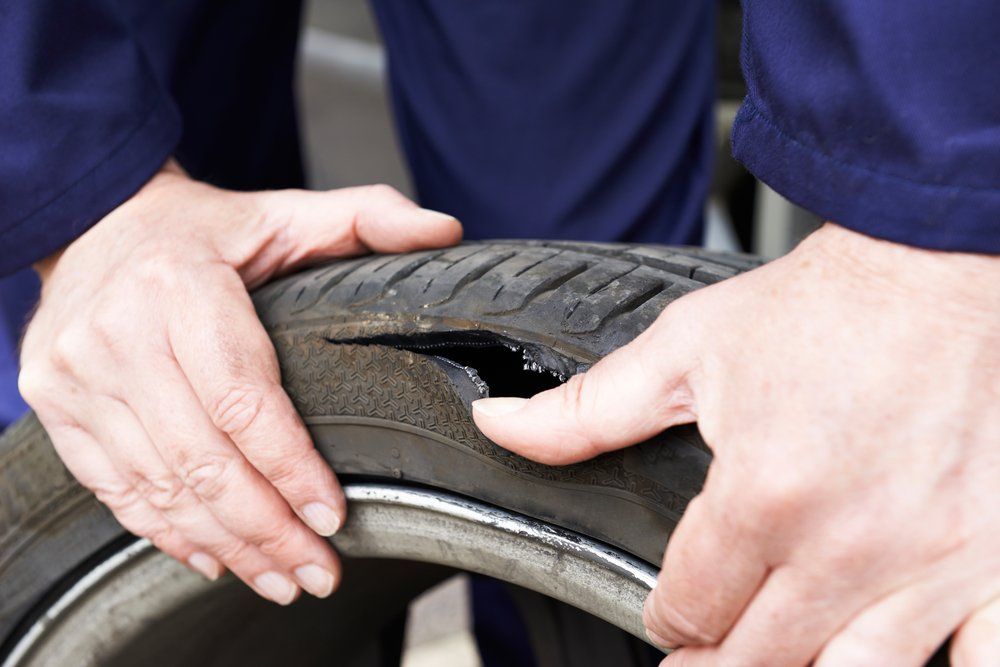
The driver must constantly monitor the pressure in the tires, preventing them from bursting. They need to be cared for according to the season. In winter, salt and other reagents that are used to treat roads and city streets against ice are very dangerous for rubber. In cold weather, low-profile tires should be inspected regularly for chips.
Do not forget that you need to wash the wheels more often, while using special shampoos. Low profile tires often show stains of gasoline and other combustibles. They need to be cleaned immediately. The condition of the spikes should be checked regularly, carefully removing dirt. The tread pattern should remain clear, without smoothness.
Store low profile tires more often in garages at 25°C. If they are with discs, then it is better to hang them. In the case of vertical storage on the floor, the tires are regularly turned to the other side.
Hanging storage
Summer also makes its demands on the care of low-profile tires.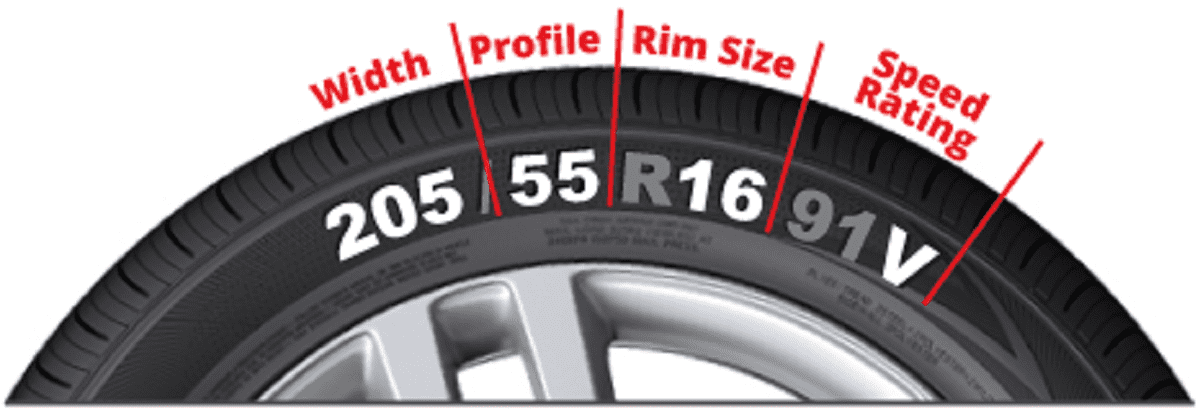 In the heat, they are exposed to the negative effects of hot asphalt. Therefore, in the evening they need to be allowed to cool. It is important to protect the rubber from ultraviolet rays with special products that do not contain silicone.
In the heat, they are exposed to the negative effects of hot asphalt. Therefore, in the evening they need to be allowed to cool. It is important to protect the rubber from ultraviolet rays with special products that do not contain silicone.
The peculiarities of the operation of such wheels include the fact that when parking, the rubber “remembers” its position, flat sections form on it. Therefore, it is necessary to warm up the wheels in order to restore the technical characteristics. If this is not done, then traffic safety is sharply reduced at high speeds.
If you want to make your car especially stylish, give it the best performance, and the roads you have to drive on allow it, then buy low-profile tires, experience the joy of every trip.
Car wheels are the first thing that comes to mind in the context of visual tuning. Not every car will be better after installing a tailgate spoiler. And big, uniquely patterned rims will always come in handy, whether it's a flashy Japanese coupe or a sleek sports sedan.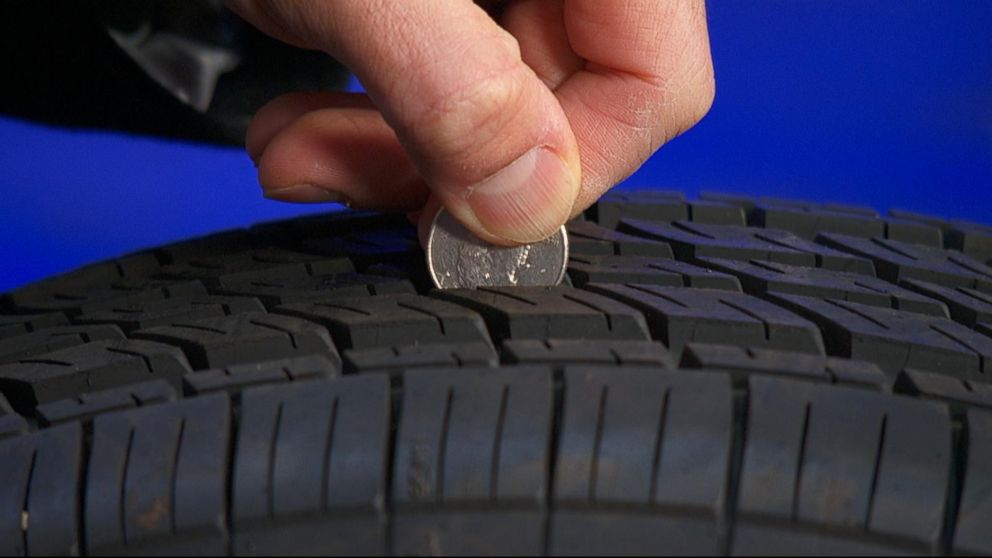 However, larger discs take up more space in the wheel arch. Therefore, they are combined with tires whose profile is lower than originally. How to recognize low profile tires and how do they affect the driving experience?
However, larger discs take up more space in the wheel arch. Therefore, they are combined with tires whose profile is lower than originally. How to recognize low profile tires and how do they affect the driving experience?
Low profile tires are models offered in relatively low sidewall sizes. Relative - because its height is calculated in relation to its width. The low profile is usually paired with a wide tread. Various vehicle models are adapted to work with different wheel sizes, giving users the choice between high profile or low profile tires.
For example, some versions of the BMW 3 Series initially use tires 205/60 R16 . These are definitely not low profile tires. The height of the sidewall in this case is 60% of 205 mm, i.e. 123 mm. Optionally, this model of the Bavarian brand can be equipped with wheels with low-profile tires in size 225/45 R18. To do this, the sidewall, that is, the profile of the tire, is reduced to about 100 mm.
The BMW 3 Series is also designed to be driven on a wheel set with front tires 225/35 R20 and rear tires 255/30 R20. Then the sidewall of the front tires is 79 lessmm, and the rear is already 76.5 mm! And we talk about the same car all the time.
It goes without saying that the car will look much better on large rims with low profile tires. However, appearance is not everything. The behavior of the car on the road will also change. However, before we analyze the advantages and disadvantages of low profile tires, it's worth asking: "Where does this low profile actually start?"
Currently, low profile tires can be classified as models with a profile of less than 50% of the tread width. However, 40-50 years ago, even a profile of 80% of the width was perceived as low. Therefore, low profile tires for everyday use have a profile height of 35-45% of the tread width. This does not mean that you cannot "lower" the profile even lower.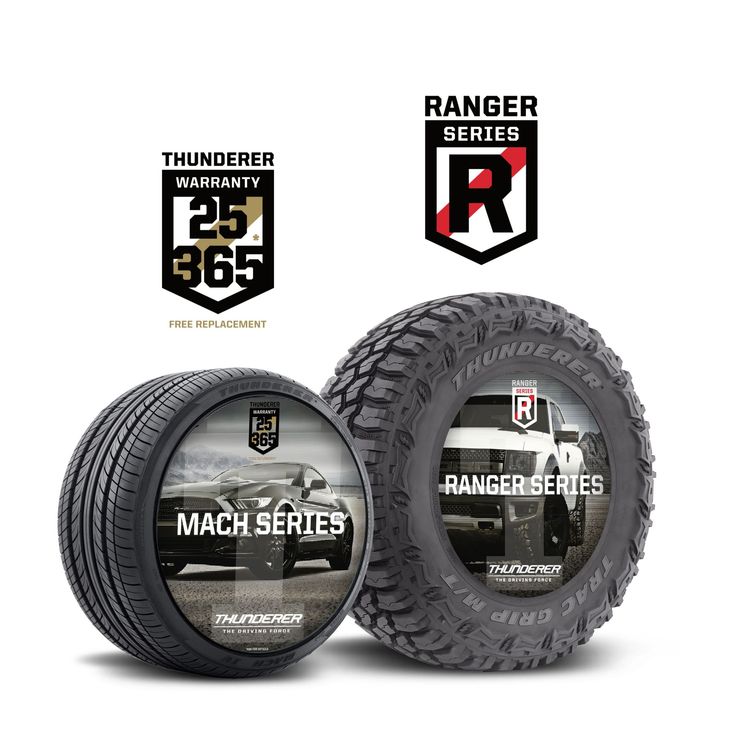
The European Tire and Rim Technical Organization (ETRTO) adopted a standard in 2009 that the minimum possible tire profile is 20% of the width. It was size 375/20 R21.
The Americans did not attach much importance to European standards and in the same year the Nexen N3000 tire was presented at the SEMA tuning fair in size 365/15 ZR24. Kumho Tire has also prepared a 15% profile tire, the Ecsta SPT KU31 385/15 ZR22. It is easy to calculate that the profile of the Nexen model is less than 55 mm. Kumho's profile isn't as drastically lowered, but its height at 57.75mm isn't much higher.
It's not just the look of the car that benefits from low profile tires. Driving performance will also be improved.
As mentioned earlier, a low tire profile is combined with a wide tread. This, in turn, results in an increase in the area of contact with the road and hence better contact with the road. The lower profile also improves stiffness. The low profile is not as prone to bending and deformation under the influence of overloads. As a result, it will transfer power more efficiently and maintain the 's better stability when cornering aggressively.
The low profile is not as prone to bending and deformation under the influence of overloads. As a result, it will transfer power more efficiently and maintain the 's better stability when cornering aggressively.
Thus, the advantages of low profile tires are better appearance and improved driving performance. Improved cornering stability, greater confidence when driving at high speeds and improved appearance are features that are certainly desirable for owners of performance cars with sporty driving characteristics.
However, low profile tires are not the ideal solution - there are some inconveniences to consider when fitting them to your vehicle.
After switching to low-profile tires, you will feel a drop in driving comfort after the first trip. The lower profile does not bend as much as the high profile, which, on the one hand, improves driving performance, and on the other hand, reduces the damping of bumps. Driving comfort is bound to suffer after a radical lowering of the profile.
Driving comfort is bound to suffer after a radical lowering of the profile.
Lower tires also mean more risk of rim damage. Potholes in the road, high curbs and other such factors make it easier to access the rim surface. The likelihood of rim chafing when hitting a curb on low profile tires is higher. Also, a low profile tire is more effective at absorbing potholes, which, combined with the low profile and high speed, can easily cause the rim to bend or even crack.
The safety level of low profile wheels can be increased by using tire models equipped with protective lip . This element is often found in low-profile tires, but this significantly increases the price and does not provide 100% protection against damage, but only reduces their likelihood.
Low profile tires also accelerate wear on suspension components that have to work harder. The 's control arms and dampers should take on some of the work that the high sidewall does on big profile tires.
When changing tires to low profile tires, remember to adapt the vehicle to the changes. In order for the speedometer to show the correct speed, may need to be coded into the new tire size in the car's on-board computer. When changing the wheel height by 5 mm or more, it is also necessary to correct the headlight adjustment.
Car manufacturers specify suitable low profile tire sizes and inflation pressures. To maintain high driving performance and an adequate level of safety, it is necessary to maintain the correct tire pressure. When pressure is lost, low profile tires will not flex like high profile tires. In such a situation, even significant air losses in the wheel will be difficult to see "by eye". Therefore, when driving with low profile tires should check the pressure more often .
Tire manufacturers recommend checking the pressure of every 2-4 weeks . When driving on low-profile tires, it is better to observe a shorter time interval and drive up to the compressor twice a month. The pressure should also be checked before any long trip or driving with more load than usual.
The pressure should also be checked before any long trip or driving with more load than usual.
First of all, you need to make sure that the tire size corresponds to that specified by the manufacturer. If there are also low-profile variations in the list of sizes that fit our vehicle, you should base your decision on the advantages and disadvantages of this solution and your driving style.
Calm drivers who do not drive particularly fast and aggressively, and also value comfort on the road, should not choose the low-profile tires. Due to this style of driving, the advantages of a low sidewall will not be used, and the disadvantages will still show up.
Owners of high performance vehicles who do not already use low profile tires may consider this option. This will contribute to a better use of power, as well as increased stability and driving confidence, which will not only affect the driving experience, but also safety.